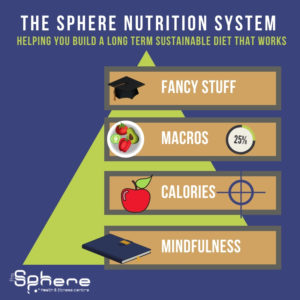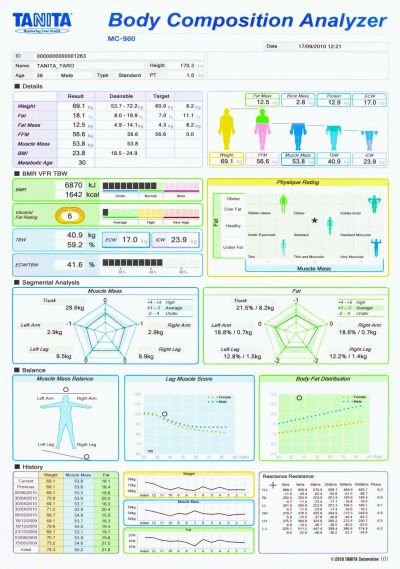“While it’s wonderful that investors have access to all the data now available to them, it has become a full-time job to sift through it and separate out the valuable news from the useless noise”. Maria Bartiromo
Diets are a minefield and naturally in a world of clutter you will have folks who with laser like accuracy have found the answer to this.
Keto, low carb, low fat, high protein, meat only, vegan, vegetarian, tears of a unicorn, cabbage soup….the list is endless and naturally confusion reigns.
What do I do?

Here is a list of steps that you can take when trying to create a diet that works for you starting from the beginning.
Recognize the principles that underpin a ‘good diet’
Number one at the top of that list is starting a diet one that you can stick to. Studies have demonstrated that being able to stick to one for between 6 months and 2 years is a good starting point. So that sweeping change you make with your carbs better be something you can stick to for a length of time. Long enough to see a tangible result from it.
No matter what you do – can you stick it out long enough to see a change. If not, then stop and rethink your process.
It is important to add that 6 months to 2 years sounds like an awful long time! Most folks cant get their head around 2 days!
However, diets can be worked at in aggressive stints with diet breaks holding your calories at maintenance. Short term very low calorie diets (VLCD) interspersed with diet breaks also works well.
Recognise Calories
The second key principle is one of calories. You can’t skip around this. Sure, you can come up with ways to intuitively eat less (fast one meal a day, put your knife and fork down between bites, eat an apple before meal, drink a large glass of water before a meal..).
All are demanding an adherence to calories in, calories out. They are either consciously or subconsciously helping you eat less.
If you haven’t lost weight, you are either eating at average maintenance level or slightly above.
You need to know YOUR numbers. We help you with this and give you on-going targets based off your Bodyscans.
The World Health Organisation is pretty clear in what makes up a good diet. The long and short of it is that it is what our grandparents would have eaten. If you want to label a diet then the Mediterranean Diet is a pretty good start for a framework.
Limited processed foods, whole foods, sustainable protein sources, high fibre, low to moderate fat intake and plenty of water.
Log your food intake
Record everything you eat for a few days, longer if you feel it helps. There are many reasons for this and the ‘how’ has been outlined here how-to-track-your-macros
Whilst it is not mandatory to track calories it definitely helps.
Logging your intake can identify behaviours and routines which may or may not be working in line with your goals. Maybe you are a veggie fanatic – great! Keep this. Maybe you enjoy a few glasses of wine over the course of a week and these calories are adding up? Great! You are now aware of it and can maybe reduce it down to a more sustainable and healthy level
What about those snacks that are tipping you over maintenance level for your calories for the day? All of them are high in calories and despite sound choices with breakfast, lunch and dinner they are tipping you over the edge in terms of you losing weight. Great! You know now and can come up with some sensible strategies to keep them but work them into your lifestyle and daily routines.
These are 3 really common scenarios and you may be different. A food record gets you started by making you aware of where to look and depending on how much detail you go into can also give you the feedback to boot.
How many calories do you need?
Which leads me onto the ensuring you are getting the right amount for your goals. We have a handy calculator here which gives you a starting point. We also give clients their own number to work off. These are guidelines not prescription and regular assessment is crucial both with tangible and intangible makers.
Once you have your calorie number you can decide on your eating routine and gain some structure around it.
How many meals are you going to eat?
What is your daily eating schedule like? 2,3,4 meals a day? Skip breakfast, light tea and big lunch?
Once you have an idea of your number you can divide that daily intake into your meals and get planning. Most of us eat the same things so it shouldn’t be too much effort to understand what a 500 kcal earl looks like or a 200 kcal snack looks like. You can then do the math from there.
Map out 1-2 Breakfast, lunches and dinners the day before and insert them into MFP
We find that asking clients to map out what they are going to eat the day before works well. Most folks can think a day in advance and it ties into what they are doing already – perhaps you think about what you are having for dinner the day before. IN this instance it extends to breakfast and lunch. Write them down or put into the app so that you can portion control it

Adjust the calories
Your body will change. As will your requirements. Upping your activity levels will be key but also ensuring you adequately fueled for your day! Constant monitoring will be key and you may need to lower or maintain your calorie requirement going forward.

Using this 5 step process will be necessary for a 12-16 week programme and will take a beginner through the steps in a gradual way. For some it may be longer! Whatever your goal you set the pace but keep the principles in mind.







